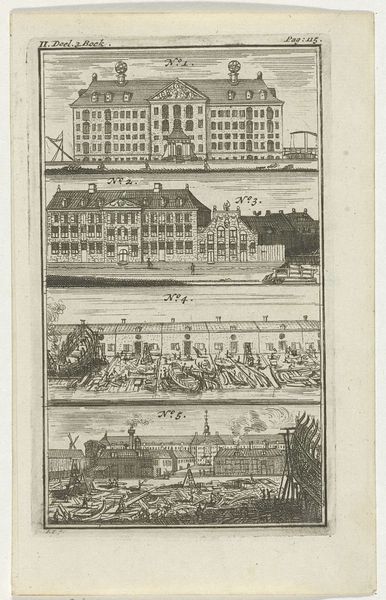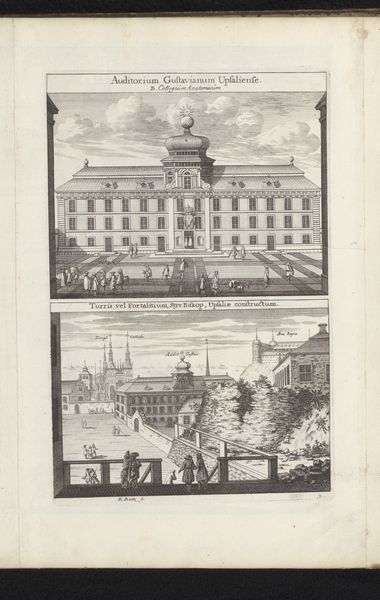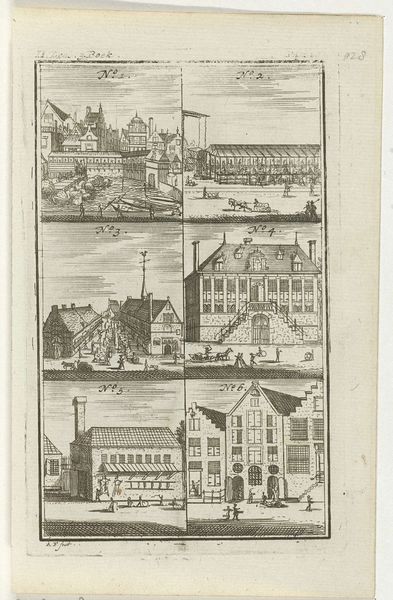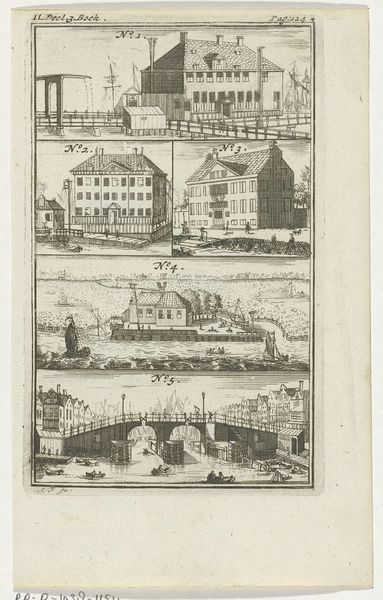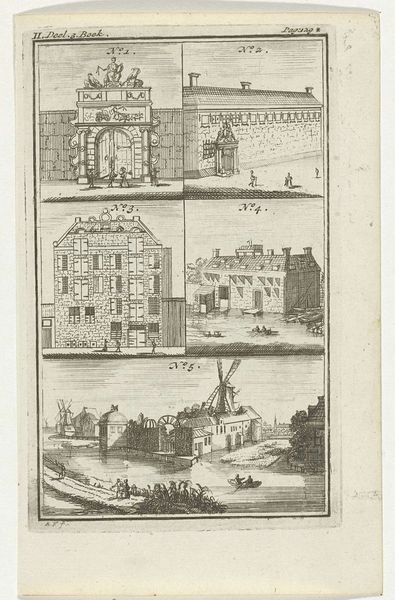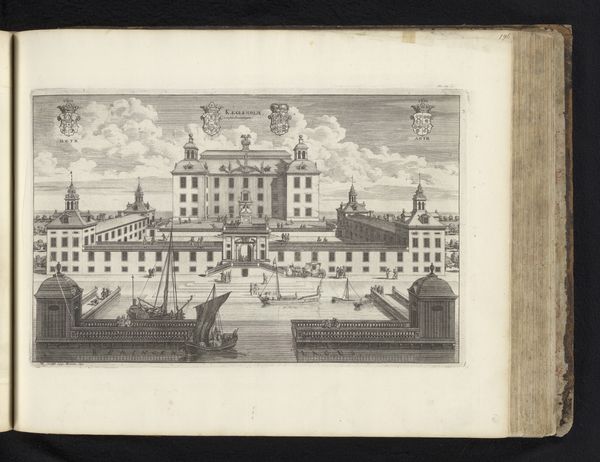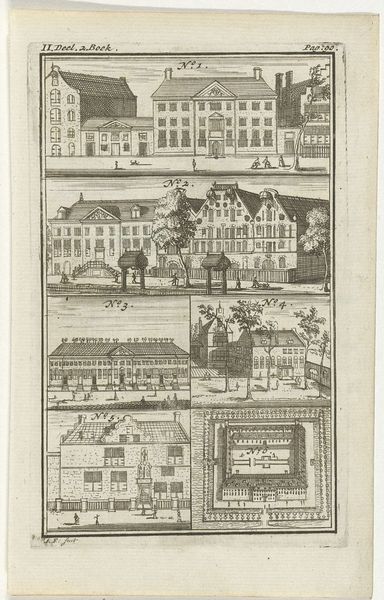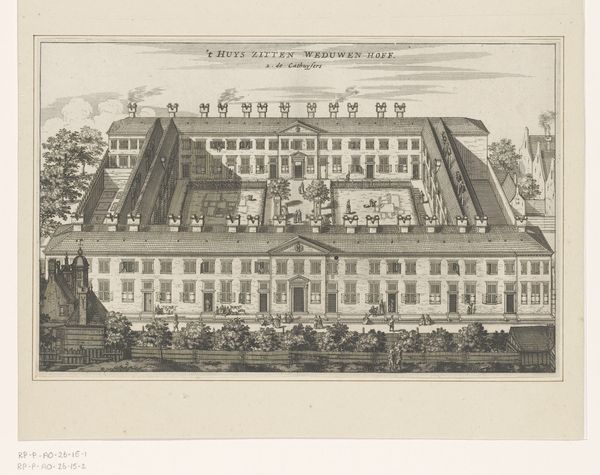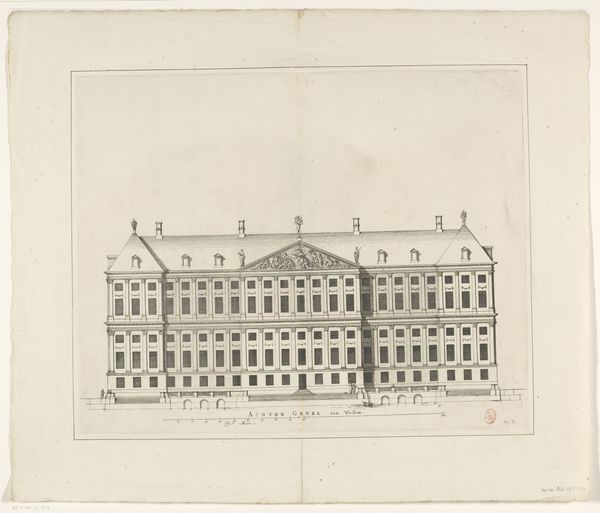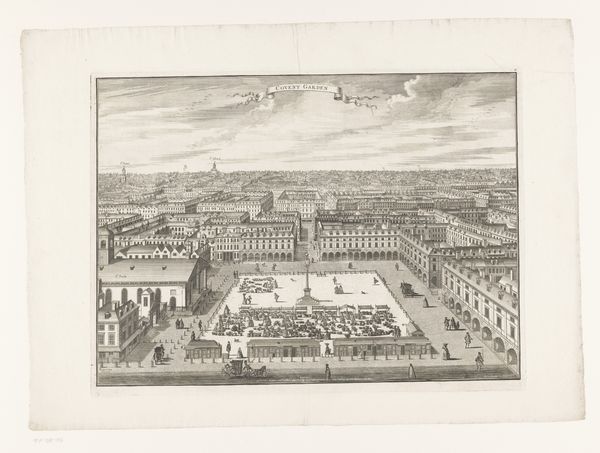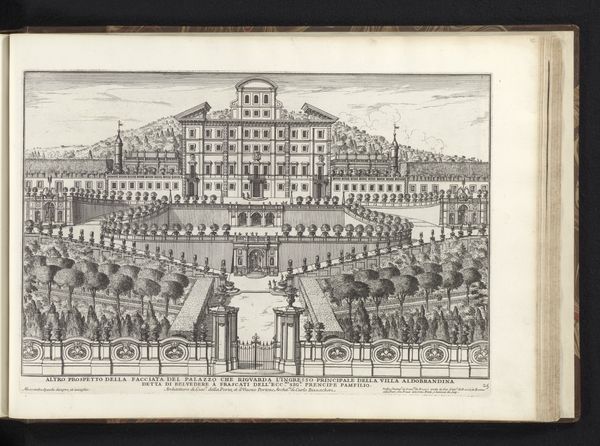
print, etching, engraving, architecture
#
baroque
# print
#
etching
#
etching
#
cityscape
#
engraving
#
architecture
Dimensions: height 154 mm, width 96 mm
Copyright: Rijks Museum: Open Domain
Editor: This is a page of illustrations, “Tekstblad bij boekillustratie,” from 1723, by Roeland van Leuve. They're prints, engravings, I think? All of buildings in a cityscape setting. It is interesting that it is more of a document that work of art. How do you see this as an object made? Curator: Well, exactly. The context of production really shapes our understanding. As a print intended for a book, its value resides less in its uniqueness as an artwork and more in its role as a reproducible commodity. Think about the labor involved in producing numerous copies versus the concept of a singular masterpiece. What does that shift in purpose imply? Editor: So, it's less about Van Leuve's artistic genius and more about the entire book-making industry at the time? How did these images function in terms of information and commerce? Curator: Precisely! We should be examining the availability and distribution of paper, the organisation of print shops, and the readership these books aimed to reach. Consider the social strata that had access to these printed materials and the knowledge they disseminated. The uniformity in architectural style across the cityscape reflects, perhaps, a desire for control and standardization in society. How is labor depicted or, rather, erased? Editor: You mean that people and production itself have disappeared, that architecture becomes divorced from it context of creation and social purpose? I guess seeing them like this makes the buildings look like... consumer products themselves? Curator: In a way, yes. The commodification of architectural representation mirrors the growing commodification of space itself. The print functions not only as documentation, but as a kind of advertisement for a certain type of urban life and the labor behind it. How might the act of etching itself – the repetitive scratching into a metal plate – relate to the repetitive, regimented labor that constructed these cities? Editor: So, the image is really about all the industries behind it. Looking at the details that way opens a new way of considering a printed illustration. Curator: Indeed, a focus on materiality allows us to dismantle traditional notions of authorship and artistic genius.
Comments
No comments
Be the first to comment and join the conversation on the ultimate creative platform.

